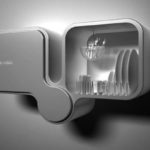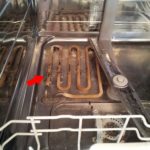How does a dishwasher work?
A dishwasher is not as common as, for example, a washing machine. It’s not that the invention was new – the first prototypes appeared back in the nineteenth century. It’s just that many people can easily do without a dishwasher, but it’s more difficult to do without a washing machine. How does a dishwasher work? The article will describe the principle of its operation and list the main components.
The content of the article
- How the dishwasher works inside: video examples
- Structure of a dishwasher
- How to operate a dishwasher
- Practical rules for operating the device, which are not written in the instructions
- Dishwasher operation sequence
- The nuances of the dishwasher
- Possible problems with the dishwasher and ways to solve them
How the dishwasher works inside: video examples
These videos clearly illustrate how the dishwasher works:
What does a dishwasher look like from the outside?
The control panel displays the cycle being performed, and the dishwasher, in accordance with the program, performs a series of actions - it draws water, mixes detergents with salt, heats it, rinses and dries the dishes.You can outwardly understand what is happening at the moment by the sounds of a running electric motor driving the rocker arms, pump, fan during intensive or turbo drying, as well as by the readings on the control panel.
Structure of a dishwasher
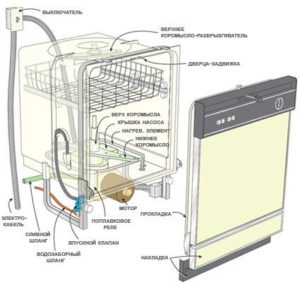 To understand how a dishwasher works, you need to understand how it works. If you need to disassemble the machine, it is best to capture the process in a photo or video, so that you can reassemble it correctly later. Let's list the main parts:
To understand how a dishwasher works, you need to understand how it works. If you need to disassemble the machine, it is best to capture the process in a photo or video, so that you can reassemble it correctly later. Let's list the main parts:
- The circulation pump, also known as an electric motor, pumps water into the rocker arms, forcing it to circulate.
- Rocker arms - water enters the working chamber through them.
- Filter - necessary for filtering water and filtering it from incoming debris - it enters the engine purified.
- Drain pump - to drain dirty water into the sewer.
- The heating element is a heating element or flow type. Heats water to operating temperature.
- Baskets for dishes - designed for placing cutlery in them; rotating rockers are located under the baskets.
How to operate a dishwasher
To control the operation of the dishwasher, you need to set its operating program. The operating instructions for the device describe all operating modes in detail. Before pressing the “Start” button, you need to make sure that the water supply is not cut off and there are no problems with the power supply. After pressing the “Start” button, the dishes will be washed automatically; there is no need to control anything.
Practical rules for operating the device, which are not written in the instructions
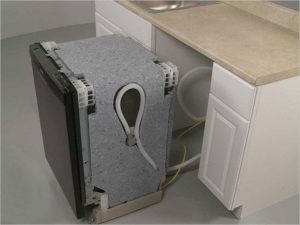 To extend the life of the dishwasher, you should not connect it to a hot water supply, even if this option is provided for this model - both hoses and sensors quickly become unusable under the influence of temperature. In addition, cold tap water is cleaner than hot water.
To extend the life of the dishwasher, you should not connect it to a hot water supply, even if this option is provided for this model - both hoses and sensors quickly become unusable under the influence of temperature. In addition, cold tap water is cleaner than hot water.
To save energy in dishwashers with turbo drying, if there is no urgent need to dry the dishes, you can wait until the drying cycle begins, turn off the power, open the machine door and calmly finish drying the dishes naturally.
Dishwasher operation sequence
The main stages of the work process are as follows:
- basic washing by spraying a mixture of water and detergent;
- double rinsing, during which food and detergent residues are removed;
- natural or forced drying.
Why do you need to soak dirty dishes?
 The soaking mode is designed for washing very dirty cutlery with burnt or food residues stuck to them, for example, buckwheat porridge. In this mode, the pump supplies and sprays water in small portions over a long period of time, and the dirt is acidified.
The soaking mode is designed for washing very dirty cutlery with burnt or food residues stuck to them, for example, buckwheat porridge. In this mode, the pump supplies and sprays water in small portions over a long period of time, and the dirt is acidified.
How does the washing process work?
First, the incoming water is mixed with salt and detergent, then the heating element heats it, then, depending on the program, soaking or primary rinsing occurs. During the rinsing process, water is supplied under pressure through a spray arm onto the dishes, washing away food residues. Then, after passing through a coarse filter, the same water is used for repeated rinsing. After this, the drain is triggered, then the tank and dishes are rinsed with clean water.It also drains, and the automation switches on the natural or forced drying mode. Upon completion, the machine signals the completion of work.
Features of rinsing and drying dishes
When rinsing, the pressure comes under pressure, with the simultaneous rotation of the rocker arms.
There are three types of drying - condensation, or natural, intensive with the injection of air at room temperature, and turbo-drying, in which a fan pumps heated air. Different dishwasher models have specific drying modes.
The nuances of the dishwasher
How long does it take to wash dishes?
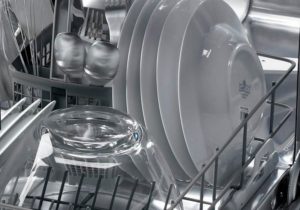 A full washing cycle takes from 30 minutes to an hour and a half. A lot, any housewife will say and declare that she can do it twice or three times faster. Nobody argues, but no one is going to organize a speed washing competition. The beauty of the machine is high-quality washing and freeing the user from routine activities.
A full washing cycle takes from 30 minutes to an hour and a half. A lot, any housewife will say and declare that she can do it twice or three times faster. Nobody argues, but no one is going to organize a speed washing competition. The beauty of the machine is high-quality washing and freeing the user from routine activities.
How to determine the load level of the device
It may happen that the selected dishwasher operating mode is not suitable for the amount of dishes being loaded. This will immediately affect the quality of its washing and drying - it will be visible to the naked eye. In this case, the operating instructions for the device are taken and studied, and other operating modes are tested.
Possible problems with the dishwasher and ways to solve them
The two most common problems are that the water may not leave the tank, and it may not heat up. The reasons for each of the malfunctions can be listed at seven or eight for each. The most typical of them, along with the elimination method, are given in the operating instructions.If you have no experience in repairing household appliances, you need to contact a specialist who knows what and how to do in this situation.


